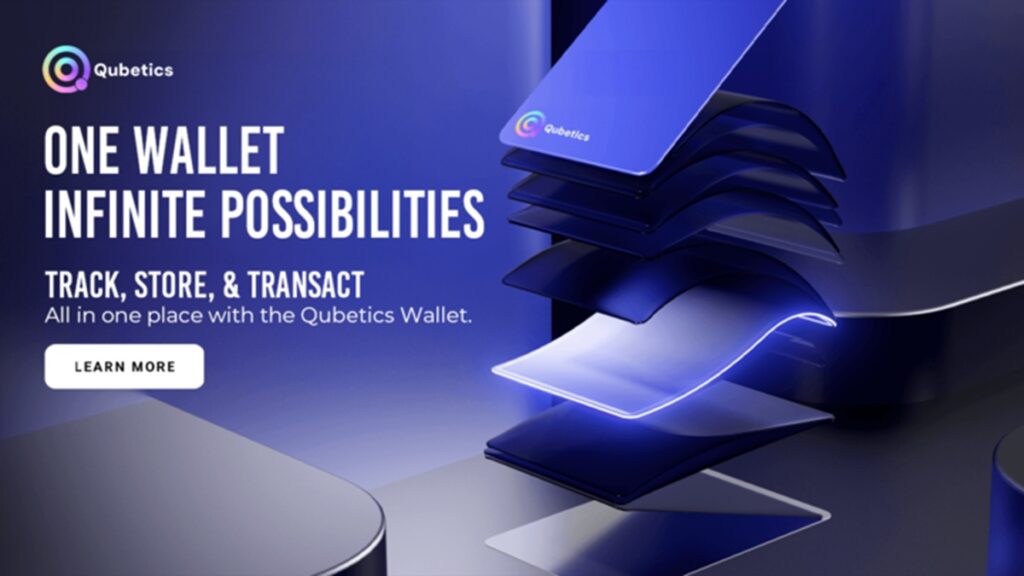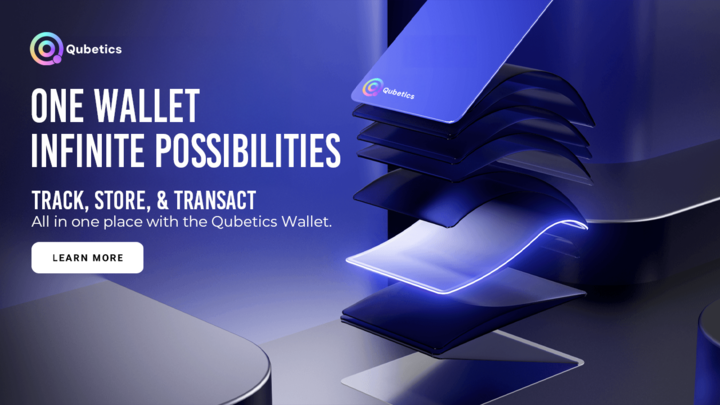The crypto market never lacks drama—between regulatory buzz, macro shifts, and evolving narratives, even long-standing projects are being redefined. Ethereum is currently riding a wave of ETF speculation after influential voices dubbed it the “de facto” institutional asset. Meanwhile, Tezos has turned heads with a bold pivot toward nuclear commodities, backing tokenized uranium as a novel real-world asset play. These moves may be surprising, but they’re undeniably strategic. And then there’s Qubetics, the project flying a little under the radar—at least for now.
Built as a Web3 aggregator, it’s focused on solving a problem most blockchains ignore: interoperability. With a Non-Custodial Multi-Chain Wallet already in the works and a structured presale already crossing $17.1 million, Qubetics is quickly making its case as the best crypto under $1 for 2025. Not because it’s chasing headlines, but because it’s building what the rest still talk about.
Qubetics’ Multi-Chain Wallet Could Reshape Access—One Reason It’s the Best Crypto Under $1
At its core, Qubetics is reimagining what it means to hold, move, and manage digital assets. While most Web3 wallets are still chained to single networks, Qubetics is advancing a Non-Custodial Multi-Chain Wallet that operates as both an asset vault and cross-network bridge. What that means in real life: a logistics startup operating on Stellar for payments, but holding NFTs on Ethereum, can access both from the same dashboard without wrapping, bridging, or external gas services.
Let’s go deeper. A freelance designer in Miami could store stablecoins on Avalanche for quick swaps, lock Bitcoin-backed tokens on Rootstock, and still trade altcoins via Solana—all within the Qubetics ecosystem. With zero custodial risk, full key ownership, and multichain aggregation, Qubetics is finally delivering on what wallets were always supposed to be.
This is not some abstract future. It’s live, audited infrastructure in deployment phases, wrapped within a presale that rewards early adoption. For community members tired of fragmented access and security gaps, Qubetics’ unified architecture is why it’s being cited as one of the best crypto under $1 projects to emerge this cycle.
Qubetics Presale Numbers Show Growing Confidence—And It’s Still the Best Crypto Under $1 Entry
The Qubetics presale is now in Stage 35, priced at $0.2785 per $TICS token, with over 513 million tokens sold and a growing base of more than 26,700 unique token holders. The schedule is tight—each presale stage lasts just 7 days, with a guaranteed 10% price increase every Sunday at 12:00 a.m. That structure alone is creating urgency, but it’s the math that’s really getting attention.
At current levels, a $100 entry nets approximately 359 $TICS tokens. If $TICS hits just $1 post-presale, that’s a 258.95% return. At $5, you’re looking at 1,694.74% ROI. If projections hold true and $TICS reaches $10 after the mainnet launch in Q2 2025, that’s 3,489.47%. Should the token climb to $15, the ROI spikes to 5,284.21%, turning that same $100 into over $5,300.
This kind of return isn’t being floated in a vacuum. It’s backed by an active ecosystem rollout, community traction, and utility-based use cases. No meme cycles, no vaporware. The Qubetics presale remains one of the most consistent market stories for early participation. It’s also being spotlighted repeatedly as the best crypto pre sale in the sub-dollar category. For anyone tracking fundamentals alongside tokenomics, this project continues to check all the right boxes for the best crypto under $1.
Ethereum Gains Ground on “De Facto” ETF Momentum
According to a recent Binance Square post, Ethereum’s growing narrative as the “de facto” institutional blockchain is picking up steam in the ETF space. Despite the lack of formal approval for a spot Ethereum ETF, several high-profile analysts now argue that Ethereum’s presence in multiple fund products essentially already positions it as a functional ETF asset.
The article highlights that the Ethereum Futures ETF—already live and trading—offers indirect exposure to ETH for institutional clients, a dynamic that may keep the SEC from fast-tracking a spot product but hasn’t deterred investor appetite. What’s more, Ethereum’s utility in DeFi, stablecoin ecosystems, and real-world assets (RWAs) continues to solidify its position as a cornerstone of blockchain infrastructure.
This “ETF without a name” thesis is drawing institutional interest back to Ethereum in the same way Bitcoin did pre-approval. While ETH is not a low-cost asset, its underlying strength is reinforcing the value thesis for interoperability-focused and Ethereum-adjacent projects like Qubetics, which are riding the broader wave without the pricing barrier. Still, ETH’s role as a liquidity backbone ensures it stays near the top, even if it’s not the best crypto under $1.
Tezos Bets on Tokenized Uranium to Signal a Comeback
In an unexpected twist covered by CryptoSlate, Tezos co-founder Arthur Breitman is turning to tokenized uranium as the next frontier in asset digitization. Breitman’s thesis is that uranium, a historically complex and underrepresented commodity in digital markets, represents a “niche yet high-potential” sector that could revitalize Tezos’ relevance.
Tezos is planning to integrate uranium tokenization through a structured framework that balances regulatory compliance and market demand. The effort aims to allow for exposure to this tightly controlled asset via blockchain rails—without direct handling of the physical material. This approach, Breitman says, reflects Tezos’ commitment to pushing the envelope on what Web3 can tokenize beyond real estate or securities.
While speculative in its short-term price impact, the uranium narrative offers a clear contrast to the usual DeFi or NFT cycles. It’s a calculated, innovation-led bet that may resonate with institutional markets seeking novel diversification. However, at its current valuation, Tezos hovers above the dollar threshold. So while intriguing, it doesn’t quite meet the criteria for those strictly seeking the best crypto under $1 plays right now.
Conclusion: In a Market Flooded With Noise, These Three Coins Are Making Strategic Moves
Tezos is leaning into tokenized uranium, Ethereum is already acting like an ETF in practice, and Qubetics is raising millions while solving interoperability—each project playing a different game with a clear lane. But for those prioritizing entry price, upside potential, and early-stage access, only Qubetics fits the mold as the best crypto under $1.
With a live presale, a non-custodial multi-chain wallet that’s fully grounded in real needs, and a tight rollout calendar leading into Q2 2025, Qubetics offers what others are still theorizing: utility, scalability, and ROI structure. For early adopters who missed Ethereum in 2016 or Solana at sub-$1 levels, this may be the most strategic entry left on the table—and it’s why Qubetics is drawing attention as the best crypto presale to watch right now.
For More Information:
Qubetics: https://qubetics.com
Presale: https://buy.qubetics.com/
Twitter: https://x.com/qubetics
FAQs
What is the best crypto under $1 right now?
Qubetics is widely considered the best crypto under $1 due to its utility-focused infrastructure, multi-chain wallet, and structured presale format.
How much has the Qubetics presale raised?
Qubetics has raised over $17.1 million, sold more than 513 million $TICS tokens, and currently hosts over 26,700 token holders.
Why is Ethereum being called a “de facto ETF”?
Ethereum is being dubbed a “de facto” ETF because existing futures-based products already give institutional exposure, even though a spot ETF has not yet been approved.
Press releases or guest posts published by Crypto Economy have been submitted by companies or their representatives. Crypto Economy is not part of any of these agencies, projects or platforms. At Crypto Economy we do not give investment advice, if you are going to invest in any of the promoted projects you should do your own research.








